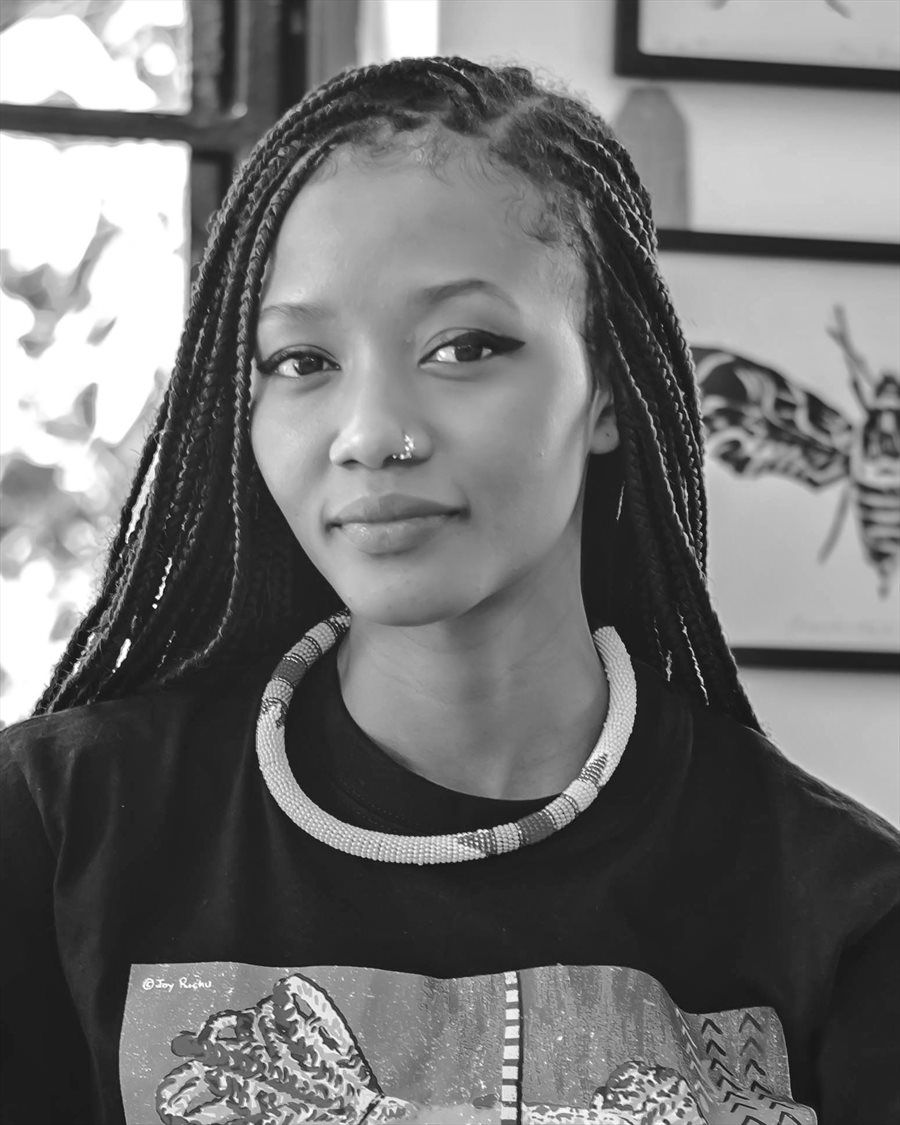#AfricaMonth: Kenyan illustrator, Joy Richu shines spotlight on African creativity
Recently, she made history as the first Kenyan to be selected for the Cannes Lions See It Be It cohort, a testament to her contributions to the creative industry.

What initially inspired you to pursue a career in design and illustration?
From a young age, I've been captivated by the transformative power of visual storytelling. My journey into design and illustration began with a humble hand-drawn comic, igniting a passion that led me to pursue formal education in Digital Design at Vancouver Film School.
View this post on Instagram
Combined with my background in Creative Writing from The University of British Columbia, this trajectory forms the foundation of my deep-rooted passion for creativity. With each project, I'm driven by a commitment to harnessing the power of imagination to drive meaningful impact. For me, it's not just about creating visually pleasing artwork; it's about using creativity as a catalyst for change and empowerment in the world.
Can you tell us about your creative process? How do you approach a new project or idea?
My creative process starts with in-depth research and brainstorming, ensuring a deep understanding of the brief's objectives and target audience. I then sketch out initial concepts, leaving space for experimentation and improvement. As I refine the direction, I transition to digital tools, blending different techniques to achieve the desired aesthetic. Throughout the process, I remain open to feedback and iteration, constantly refining my work until it aligns with both my vision and the client's needs.
Being selected for the Cannes See It Be It list is a remarkable achievement. How do you feel about this recognition, and what opportunities do you hope it will bring?
Being selected for the Cannes See It Be It list is truly an honour and a validation of my dedication to my craft. I feel immensely grateful for this recognition and the opportunities it presents. I see it as a platform to connect with fellow creatives, learn from industry leaders, and further develop my skills. I hope it will open doors to new collaborations, inspire others, and allow me to make a meaningful impact in the creative industry.
View this post on Instagram
Could you share some insights into your experience as a designer and illustrator? What are some challenges you've faced, and how have you overcome them?
Absolutely. As someone immersed in the world of design and illustration as a freelancer, I've faced my fair share of challenges. One of the most significant hurdles revolves around the unpredictable nature of freelance work, with its highs and lows in project flow and income. To navigate these waters, I've honed my organisational skills and time management techniques, ensuring I stay on track even during hectic times. Moreover, I've made it a priority to foster strong connections with clients, emphasising clear communication and reliability, which has been key to building lasting partnerships and stability in my freelance journey.
Africa Month celebrates the diversity and richness of African culture. How do you incorporate elements of African heritage into your designs?
One notable example of incorporating African heritage into my designs is through my collaboration with Coca-Cola on the Wozzaah Creations Can project (I cannot share the images yet). For this initiative, which celebrated Africa's creative essence, I drew inspiration from various elements of African culture, including traditional patterns, motifs, and colours.
By infusing these cultural elements into the design of the Creations Can, I aimed to capture the spirit and vibrancy of African heritage while also paying homage to the continent's rich artistic legacy. This project not only provided a platform to showcase African creativity but also demonstrated the power of design to celebrate and amplify diverse cultural narratives on a global scale.
What advice would you give to aspiring designers and illustrators, particularly those from Africa, who are looking to break into the industry?
My advice to aspiring designers and illustrators, especially those from Africa, is to embrace your unique perspective and cultural heritage. Don't be afraid to showcase your authentic voice and incorporate elements of your culture into your work. Additionally, continuously hone your craft through practice, learning, and seeking feedback from peers and mentors. Take advantage of online resources and communities to connect with other creatives and stay updated on industry trends. Most importantly, stay resilient and persistent in pursuing your dreams, knowing that your unique background and experiences are valuable assets in the creative industry.
Are there any upcoming projects or collaborations that you're particularly excited about?
I'm genuinely enthusiastic about expanding my creative horizons, particularly in the fashion industry. Collaborating with renowned brands like Nike is something I aspire to, as I see vast potential for my illustrations to bring unique flair to apparel designs. Furthermore, I've found that my work naturally complements merchandise, and I'm excited to explore more opportunities in this area. I'm open to partnerships that foster creative expression and innovation, and I believe there's a great opportunity for my artistic vision to complement the unique identity of forward-thinking brands.
In what ways do you think design and illustration can contribute to positive change and representation, especially in African contexts?
Design and illustration have the power to effect positive change and promote representation, particularly in African contexts, by amplifying diverse voices and narratives. Through visually compelling storytelling, designers and illustrators can challenge stereotypes, celebrate cultural heritage, and advocate for social justice issues.
View this post on Instagram
By showcasing the richness and diversity of African cultures and experiences, we possess the means to foster deeper understanding and empathy while empowering marginalised communities. Additionally, design and illustration can serve as powerful tools for education and advocacy, raising awareness about pressing issues and inspiring action for positive change.
Lastly, what are your hopes and aspirations for the future of design and illustration in Africa?
My aspirations for the future of design and illustration in Africa are rooted in fostering a thriving ecosystem that celebrates creativity, diversity, and innovation. I envision a landscape where African designers and illustrators are recognised globally for their unique perspectives and contributions to the creative industry. I hope to see increased opportunities for collaboration, mentorship, and skill development, empowering emerging talents to reach their full potential.
Furthermore, I aim for design and illustration to play a central role in shaping narratives, driving social change, and amplifying underrepresented voices across the continent. Ultimately, my hope is for African design and illustration to continue to flourish, inspiring generations to come and leaving a lasting impact on the global creative landscape.

About Karabo Ledwaba
Karabo Ledwaba is a Marketing and Media Editor at Bizcommunity and award-winning journalist. Before joining the publication she worked at Sowetan as a content producer and reporter. She was also responsible for the leadership page at SMag, Sowetan's lifestyle magazine. Contact her at karabo@bizcommunity.comRelated
#BehindtheSelfie: Adriana Woolridge, marketing manager at Homemation 1 day Muzi Mthombeni | This and That: Why brand duality is now the minimum requirement 7 Apr 2025 ARB says complaint against Department of Health TV sugar ad holds merit 4 Apr 2025 Digital footprints not as reliable as believed, warns new marketing study 3 Apr 2025 #OrchidsandOnions: Marketing lessons from the masters – Coca-Cola and KFC 31 Mar 2025 10 Tips for building a strong partnership with your agency 27 Mar 2025

































